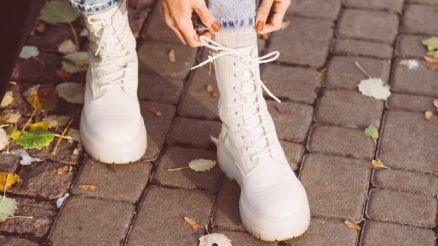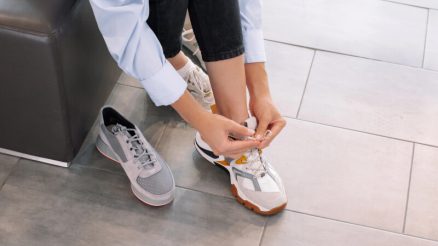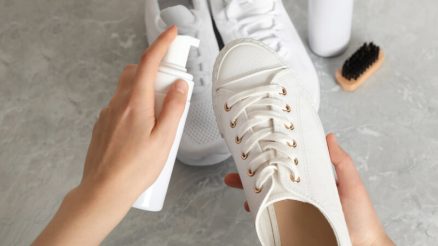Choosing the right shoe size is crucial for comfort, foot health, and overall well-being. Wearing shoes that are too small can lead to a host of problems, including blisters, calluses, bunions, and even long-term foot deformities. Unfortunately, many people wear ill-fitting shoes without realizing it, either because they prioritize style over comfort or because they’re unsure how to properly assess fit. In this article, we’ll explore the key signs that indicate your shoes are too small and provide tips for ensuring a proper fit.
1. Physical Discomfort
The most obvious sign that your shoes are too small is physical discomfort. If your feet feel cramped, pinched, or sore after wearing the shoes for a short period, it’s a clear indicator that they’re not the right size. Pay attention to areas like the toes, sides of the feet, and heels, as these are common pressure points.
- Toe Pain: If your toes feel squished or pressed against the front of the shoe, the shoes are likely too small. This can lead to conditions like ingrown toenails or hammertoes over time.
- Heel Slippage: While heel slippage can sometimes indicate shoes that are too big, it can also occur if the shoes are too small in the toe box, causing your foot to push backward.
- General Tightness: Shoes should feel snug but not tight. If you feel constant pressure across the top of your foot or around the sides, the shoes are too small.
2. Visible Signs on Your Feet
After removing your shoes, inspect your feet for any visible signs of improper fit. Red marks, indentations, or swelling are clear indicators that your shoes are too small.
- Redness or Blisters: Redness, especially on the toes or sides of the feet, is a sign of friction caused by tight shoes. Blisters are another common symptom of ill-fitting footwear.
- Indentations: If you notice indentations or marks on your skin where the shoes were pressing, it’s a sign that the shoes are too narrow or short.
- Swelling: Tight shoes can restrict blood flow, leading to swelling in the feet or toes.
3. Toe Placement
Proper toe placement is essential for a good fit. When trying on shoes, check the position of your toes:
- Toe Room: There should be about a thumb’s width (approximately 0.5 inches or 1.3 cm) of space between your longest toe (usually the big toe) and the front of the shoe. This allows room for natural foot movement and swelling that occurs throughout the day.
- Toe Box Shape: The toe box should accommodate the natural shape of your toes. If your toes feel cramped or overlap, the shoes are too small.
4. Difficulty Putting On or Taking Off Shoes
If you struggle to put on or remove your shoes, it’s a sign that they’re too small. Shoes should slide on and off with minimal effort, even if they’re designed to fit snugly.
- Tight Fit: If you need to force your foot into the shoe or use excessive pressure to get it on, the shoes are too small.
- Laces or Straps: If you find yourself loosening laces or straps to the point where they no longer provide support, the shoes are likely too tight.
5. Numbness or Tingling
Wearing shoes that are too small can compress nerves in your feet, leading to numbness or tingling sensations. This is particularly common in the toes and ball of the foot.
- Nerve Compression: If you experience a “pins and needles” sensation, it’s a sign that your shoes are restricting blood flow and nerve function.
- Temporary Relief: If the numbness or tingling subsides after removing the shoes, it’s a clear indication that they’re too small.
6. Changes in Gait or Posture
Ill-fitting shoes can affect your walking pattern and posture. If you notice changes in how you walk or stand, it could be due to shoes that are too small.
- Altered Gait: Tight shoes may cause you to walk differently to avoid discomfort, leading to an unnatural gait.
- Posture Issues: Poorly fitting shoes can throw off your alignment, leading to back, hip, or knee pain over time.
7. Shoe Wear and Tear
Examine the condition of your shoes. Excessive wear in certain areas can indicate that they’re too small.
- Toe Box Damage: If the toe box is stretched or shows signs of wear, it’s a sign that your toes are pressing against the front of the shoe.
- Outsole Wear: Uneven wear on the outsole can indicate that your feet are not properly aligned due to tight shoes.
Tips for Ensuring a Proper Fit
To avoid the problems associated with wearing shoes that are too small, follow these tips:
- Measure Your Feet Regularly: Foot size can change over time due to factors like age, weight fluctuations, and pregnancy. Measure your feet at least once a year.
- Shop in the Afternoon: Feet tend to swell throughout the day, so it’s best to shop for shoes in the afternoon or evening when your feet are at their largest.
- Wear the Right Socks: When trying on shoes, wear the type of socks you plan to use with them. Thick socks can make a significant difference in fit.
- Walk Around: Always walk around in the shoes before purchasing them. Pay attention to how they feel and whether there’s any slipping or pinching.
- Consider Width: Shoe width is just as important as length. If your feet feel cramped on the sides, opt for a wider size.
- Break Them In: Some shoes may feel tight initially but loosen up over time. However, if they’re excessively uncomfortable, they’re likely too small.
Conclusion
Wearing shoes that are too small can have serious consequences for your foot health and overall comfort. By paying attention to the signs of improper fit—such as discomfort, visible marks, and changes in gait—you can avoid the pitfalls of ill-fitting footwear. Remember, your feet are the foundation of your body, and investing in properly sized shoes is an investment in your long-term health and well-being. Always prioritize fit over fashion, and don’t hesitate to seek professional advice if you’re unsure about your shoe size. Your feet will thank you!








